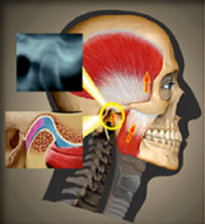One of the Risks of Having Sleep Apnea
Drowsy driving is as dangerous as drunk driving, and teens have the highest risk. The AAA Foundation for Traffic Safety estimates that each year drowsy driving causes at least 328,000 motor vehicle accidents. Sadly, many of these crashes – at least 6,400 each year – are fatal. No one is safe when driving drowsy.
One of the more common causes of drowsy driving is sleep apnea. If you experience frequent drowsiness throughout the day, you should be evaluated for possible sleep apnea
Why Risk It?
There is no “drowsiness test” to measure how sleepy you feel. And research shows that we often overestimate our level of alertness. So you may be more drowsy than you think you are!
Tricks Don’t Work!
Turning the radio up or rolling down the windows may help for a few minutes if you are drowsy, but it will not keep you from falling asleep in the driver’s seat.
Signs of Drowsy Driving
- • Yawning constantly
- • Unable to keep your eyes open
- • Restlessness and irritability
- • Nodding off
- • Daydreaming or wandering thoughts
- • Drifting into other lanes
- • Can’t remember the last few miles
- • Ending up too close to cars in front of you
- • Missing road signs
- • Driving past turns
- • Moving onto the “rumble strip” or road shoulder
Why Tell Me?
- • Teens have a hard time getting enough sleep and often struggle with drowsiness.
- • Drivers between the ages of 16 and 24 are 80% more likely to be involved in a drowsy driving crash than adults who are 40 years of age or older.
- • Drowsy driving accidents are often fatal.
- • Most drowsy driving accidents occur between midnight and 6 a.m.
- • Drowsy driving can be prevented!
How Do I Prevent Drowsy Driving?
- • Plan ahead by taking an afternoon nap before driving late at night.
- • Have some caffeine and then wait 30 minutes for it to take effect before driving.
- • Take a taxi or bus, or call home for a ride, instead of driving when you are tired.
- • Switch drivers if another alert driver is with you.
- • If sleepy, pull over in a safe place and take a 20-minute nap. Then, walk around to wake up before driving.
- • If you recognize that drowsy driving occurs commonly, it may be an indication of a sleep disorder. Consider getting tested for Obstructive Sleep Apnea or other sleep disordered breathing condition. See “About Sleep Disorders“.
Don’t drive after taking a medication that causes drowsiness, and never drink alcohol and drive!
Is It Worth It?
Drowsy driving is as dangerous as drunk driving. Drowsy driving can cause impaired judgment and delayed reactions, or cause you to drift off the road or into oncoming traffic. Drowsy driving causes mistakes behind the wheel. Even fatal driving mistakes.

